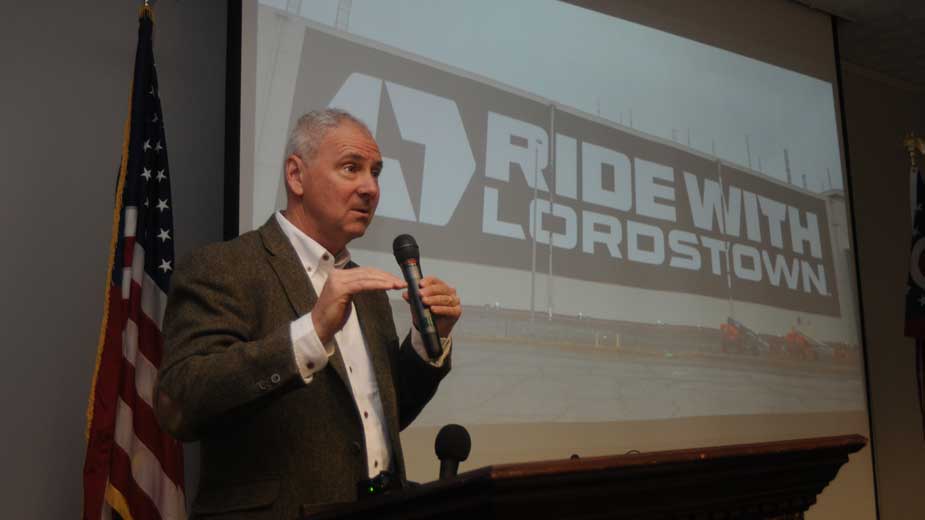Specialists Kick Off Plan to Develop Energy Storage Hub
YOUNGSTOWN, Ohio – Energy specialists and industry stakeholders took the initial steps Wednesday toward a long-term plan to develop northeastern Ohio into a hub for energy storage and training.
Central to the effort is the creation of a National Energy Storage Workforce Training and Innovation Center, a pilot initiative commissioned by the U.S. Department of Energy and led by Youngstown State University, Brite Energy Innovators and Oak Ridge National Labs.
During a virtual kickoff event Wednesday hosted by YSU, Brite and TeamNEO, more than two dozen experts in the fields of information technology, energy, and workforce development sought to identify through a series of workshops the challenges and opportunities of building an energy storage and distribution hub.
“Our vision is to identify where we are at now, and what is possible to make Northeast Ohio the leader in energy storage workforce and innovation through the development of a National Energy Storage Workforce Training and Innovation Center,” said Jennifer Oddo, YSU executive director for the division of workforce education and innovation.
Among the goals are to identify research institutions and companies focused on the energy storage supply chain; investments in energy storage; energy training and workforce programs in the area’s universities, community colleges and secondary schools; and create a national workforce and innovation model, she said.
Rick Stockburger, CEO of Brite, an energy incubator based in Warren, added that now is a perfect time to seize the opportunity to place northeastern Ohio at the forefront of energy storage and development.
Assets such as NASA Glenn Research Center, Ultium Cells LLC’s new battery cell plant in Lordstown, Aptiv’s research and development center, and the prospects of electric-vehicle development with Foxconn and Lordstown Motors make this region a prime location for new energy projects.
“Storage is key to this transition,” Stockburger said. “It’s how we take this energy, put it in one place so it’s ready to be deployed.”
Such development could revolutionize how electric power is harnessed and used, Stockburger said. It’s also a major factor in determining energy independence on national, state and even local levels.
Energy storage through batteries is applied in transportation with the electrification of vehicles and even locomotives, he said. Energy storage units are used to supply residential and commercial power, as well as in consumer electronics. “We’re looking at three tiers of energy storage and how do we use them,” he added.
The auto industry’s commitment to adopting EV production, plus the Department of Energy’s investment into this area, make the time ripe for new innovations in energy storage capability. “We need the product,” he said.
There’s no better place to do this than in northeastern Ohio, Stockburger said. “We believe we’re the heart of manufacturing,” he said, referencing the steel industry’s importance to the development of the modern age. The children and grandchildren of those steelworkers can come back and “build the next great thing.”
The kickoff event focused on several break out sessions to identify ideas toward developing a comprehensive workforce training center and how to make it successful.
Among the ideas generated was to create industrial strategic partnerships with area companies, develop a marketing and awareness campaign, establish apprenticeship programs, allow access to entrepreneurs, engage underrepresented communities and concentrate on developing brownfield sites for supply-chain opportunities.
The workshops also identified challenges with the supply chain, including the difficulty of sourcing raw materials domestically since most of these are imported from Asia.
Additional support from state and federal policies is also needed to successfully adopt a national model. For example, incentives in Michigan have proven successful in securing energy storage companies to that state.
Also important was to identify potential roadblocks or what research and development needs are today not met in the region. Among these are developing strategies to encourage young people to enter the field through different opportunities that range from tech, engineering, sales and policy engagement.
Other roadblocks include impediments to transparency and collaboration, since companies or universities are at time reluctant to share intellectual property.
Jacob Duritski, vice president of strategy and research at TeamNEO, says the workshops are the first of several that will extend through May. “These conversations will form the basis over the next two and a half months,” he said.
A final roadmap plan is to be presented in June. “The goal is to have folks actively engaging in these conversations to develop a plan for the next five to seven years,” he said. “Our work is just beginning.”
Copyright 2024 The Business Journal, Youngstown, Ohio.



